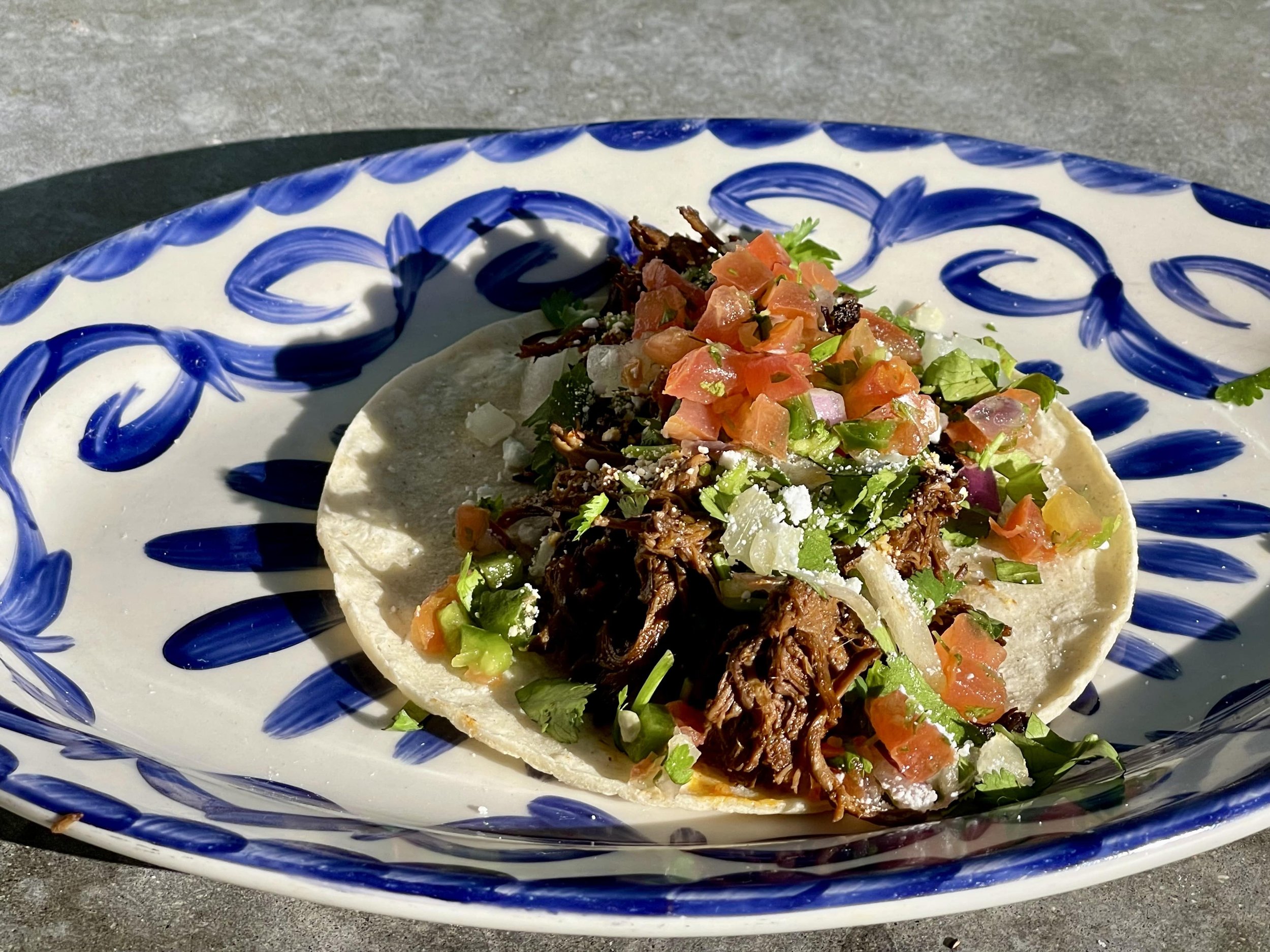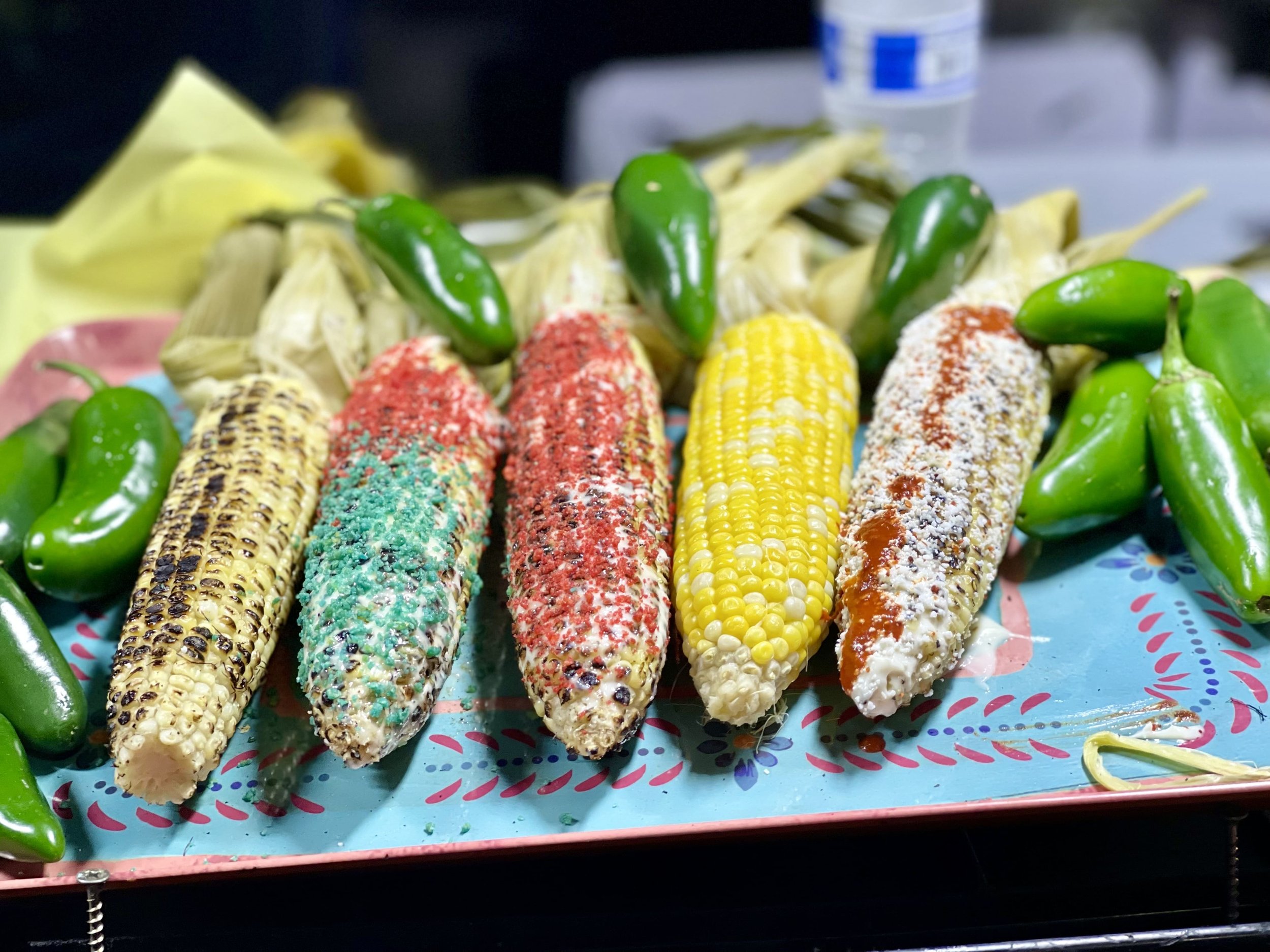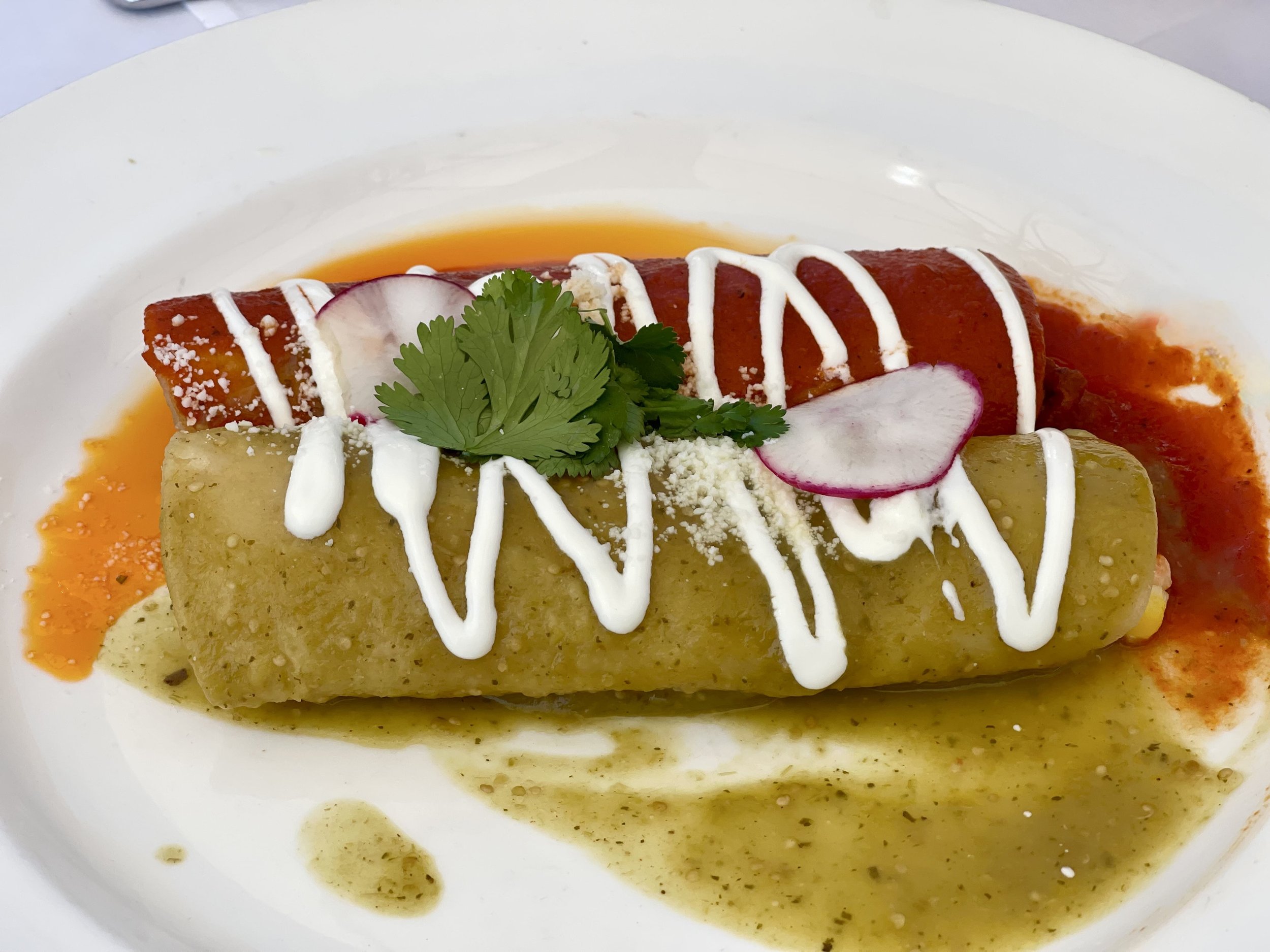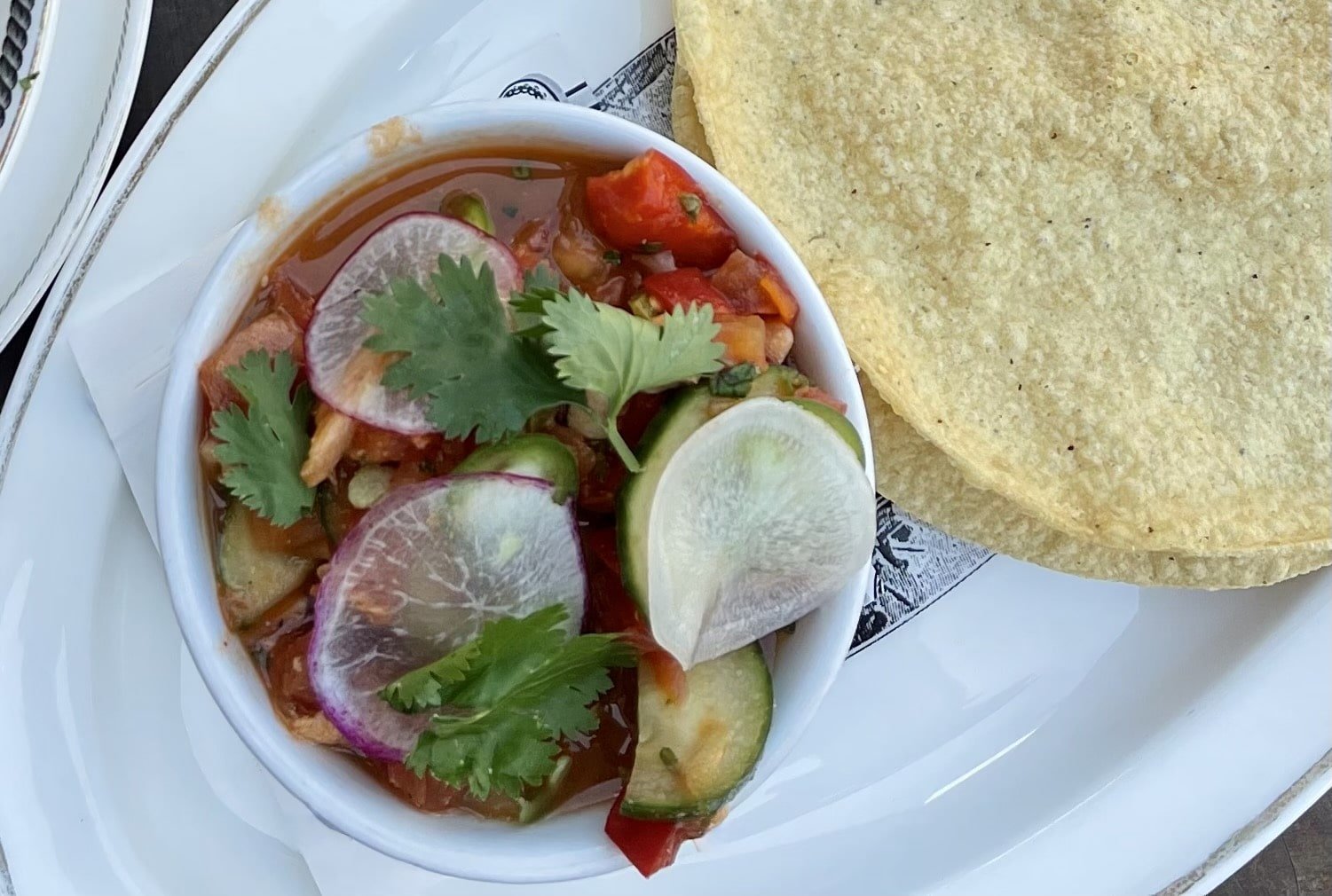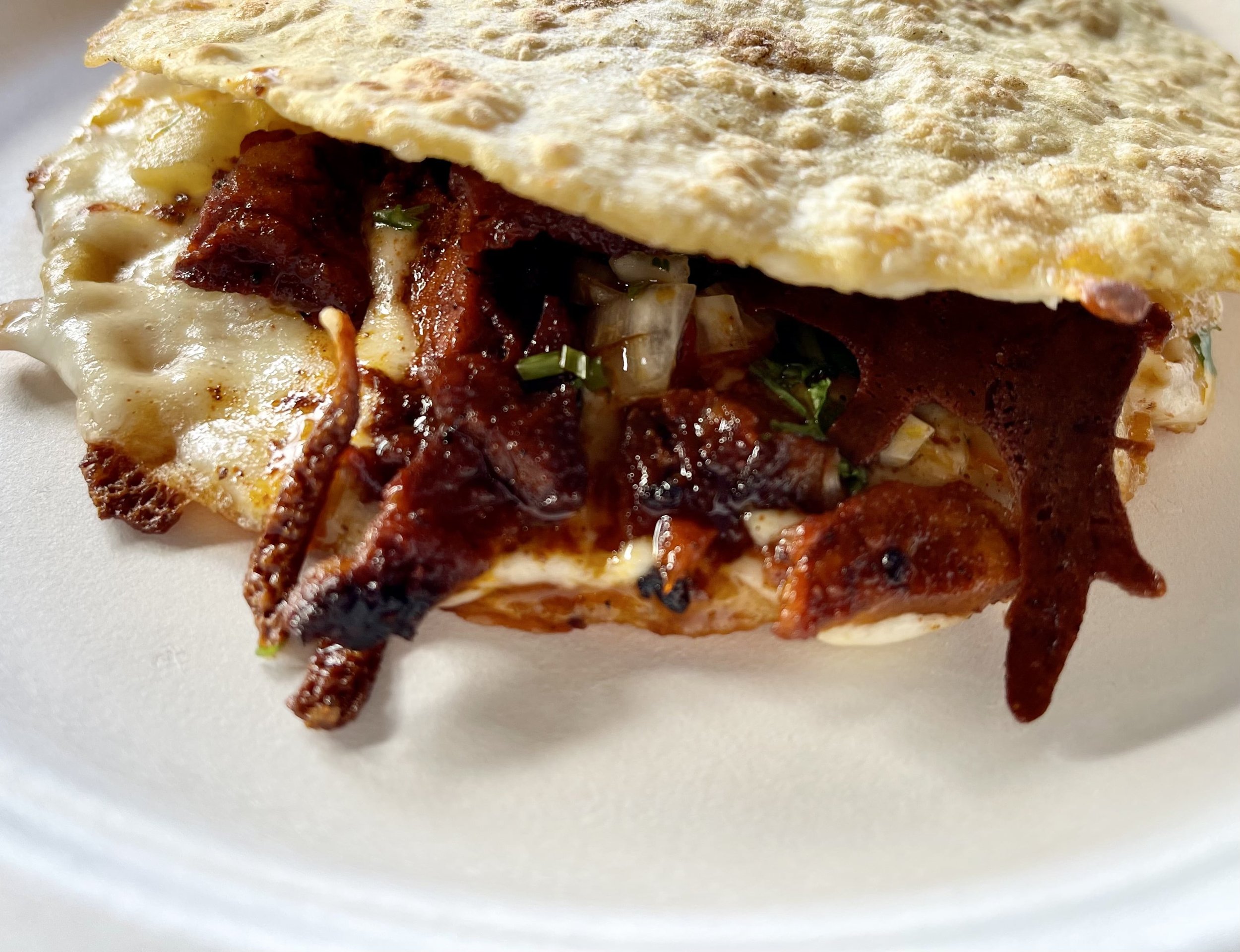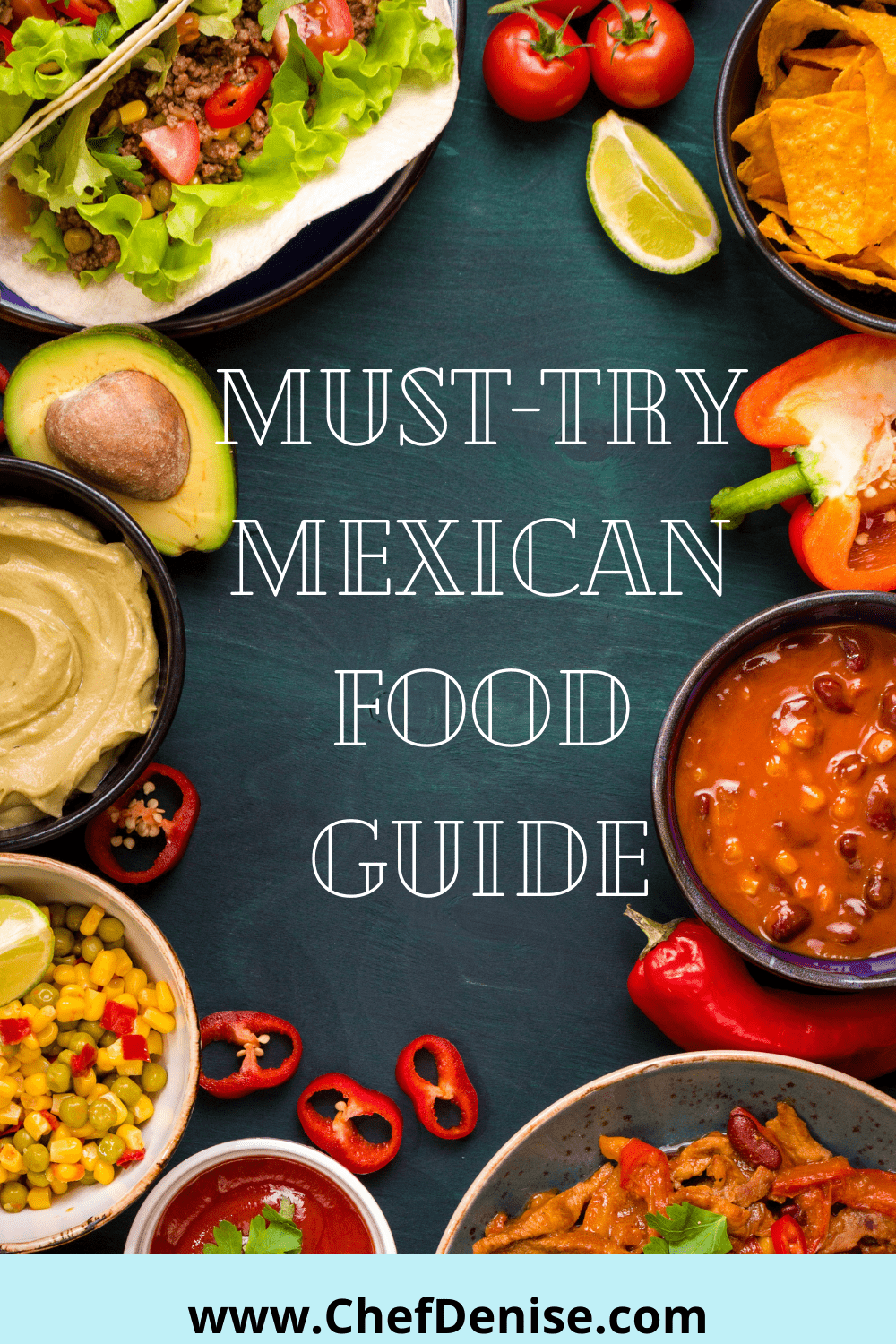21 Traditional Mexican Foods: Mexican Food Guide
Last Update: 12/10/2024
Whether you’re visiting Mexico or your neighborhood Mexican restaurant, if you’re searching for the must-try traditional Mexican foods, this Mexican Food Guide is for you!
You’ll discover the most famous Mexican foods and the region that’s best known for them. After all, the best traditional Mexican dishes will usually be found in their place or origin.
If the deliciousness of Mexican food wasn’t obvious enough, in 2010, UNESCO, declared traditional Mexican cuisine an Intangible Cultural Heritage!
As a chef who has studied the cuisine of Mexico, a Californian who eats it often, and someone who has travelled to Mexico many times, I am excited to share this list of best Mexican dishes with you.
Some traditional Mexican foods
So, if you’re a foodie that loves Mexican food or someone who wants to learn more about the famous foods of Mexico, read on, and start eating this list! BTW, I bet there’s at least one dish on the list that you’ve never tried!
Note, if you are traveling to this culinarily rich country, you may also want to know about some of the more exotic Mexican foods before you go. They may not be the must-try Mexican foods, but they will give you a deeper understanding of Mexican culture and traditional cuisine.
Read next: Weird Foods in Mexico.
Traditional Mexican Foods
1. TAMALES
Tamales, a popular Mexican food in every Mexican state
Tamales are one of the most popular Mexican dishes in Mexico and can be found in every state.
Tamales have been traced back to at least 5,000 BC (some estimates say as far back as 8,000 BC) and are probably one of the oldest foods that we still currently eat!
Tamales can be sweet- or savory-filled masa dough wrapped in corn husks or banana leaves (depending on the state) and steamed. Mexicans eat tamales any time of day, often even for breakfast. There are literally hundreds of kinds of tamales filled with almost anything you can think of. Try as many as you can!
2. Chile Rellenos
Chile rellenos, an authentic Mexican dish invented by nuns
Chile rellenos have deep roots in Mexican culinary history. These stuffed chile peppers were created in the 16th century by the nuns of the Santa Monica convent in Puebla. (For more interesting origin stories regarding popular Mexican dishes, check out our Fun Mexican Food Facts article.)
Today, chiles rellenos are a hallmark of the region's vibrant food culture and one of the most traditional dishes in the entire country.
At its core, a chile relleno is a roasted poblano pepper that's been stuffed, battered, and fried to achieve a crispy, golden exterior that encases a delicious mix of ingredients within. The original version was generously filled with cheese and picadillo (seasoned ground meat).
Nowadays, anything goes. And if you’re a fan of melted cheese like I am, chile rellenos should definitely be on your list.
If you’ve eaten at Mexican restaurants in the United States, you have probably at least seen them on the menu. They are very popular in California, Texas, Arizona, and Colorado, and are considered a staple of New Mexican cuisine.
3. BARBACOA
Barbacoa, a traditional Mexican food of Hilgado
One of my favorite traditional Mexican food dishes is barbacoa from the state of Hidalgo in Central Mexico. Barbacoa is the art of pit roasting until the meat is so tender, it melts in your mouth.
One of the most traditional Mexican recipes, Hidalgo-style barbacoa typically consists of lamb or sheep covered with agave leaves and buried in an underground pit filled with hot stones that provide enough heat to allow the meat to cook overnight.
Because barbacoa takes time and is one of the most labor-intensive Mexican foods, it's mostly served on weekends.
In Mexico City, you’ll see plenty of barbacoa street stalls, but for a more relaxed and comfortable restaurant experience, El Hidalguense in the Roma neighborhood is the place to go.
4. CHILES EN NOGADA
Chiles en nogada, one of the two national dishes of Mexico
theWhat is the national dish of Mexico? There are actually two answers: mole and chiles en nogada. The debate rages over whether just one deserves to be all alone at the top of the country’s culinary pyramid solely serving as Mexico’s national dish!
As for chiles en nogada, it is a relatively unknown choice for a Mexican national dish. But because of its colors, it’s considered very patriotic. It’s a delicious green, white, and red, the colors of the Mexican flag!
To make chile en nogada, a green poblano pepper is stuffed with meat, it is covered in walnuts that have been cooked down into a white cream sauce called nogada, and then red pomegranate seeds are sprinkled on top.
This dish is commonly eaten around September 15th, Mexican Independence Day, and you’ll typically find it in Mexico only during the month of September.
5. MOLE
Mole, the more famous national dish of Mexico
No famous Mexican food list would be complete without mole. The more famous of the two Mexican national dishes, it is one of the most complex regional Mexican foods.
In Mexico, moles are thick, rich sauces made from sesame seeds, nuts, chilies, chocolate, and—I kid you not—about 20 other ingredients.
Moles are spicy, but not super hot. Mole poblano originated in Pueblo, but moles are also considered a specialty of Oaxaca. They are so important to Oaxaca cuisine that the area is known as the land of the seven moles!
In addition to mole poblano, there’s mole negro (my favorite), coloradito, verde, amarillo, chichilo, and manchamantel.
You’ll find mole everywhere in Oaxaca, the culinary capital of Mexico. Versions range from fancy dishes in high-end restaurants to the grab-and-go street food favorites of Oaxaca.
Mole is often a celebratory dish eaten on special occasions like Christmas and Day of the Dead.
Read next: Day of the Dead Recipes.
6. TACOS AL PASTOR
Tacos al pastor, the king of Mexican tacos. Photo by Travel Mexico Solo
This is one of the best Mexican food dishes to start with if you’re unfamiliar with the cuisine. Even with all of the incredible Mexican specialties, there’s a reason tacos are the most popular Mexican food worldwide!
The undisputed king of Mexico’s many varieties of tacos is the taco al pastor. Surprisingly, these tacos originated in the Middle East.
The pastor meat (pork) is cooked on a trompo, an Arabian-style spit. Mexico adopted the culinary technique when Lebanese immigrants brought it with them to their new home in the 1800s, and it is still used in Mexican cooking.
However, Mexican cooks changed the original meat from lamb to pork, and they switched the marinating spices to chile peppers and other indigenous spices.
They also added piña, or pineapple, one of the country’s many tropical fruits. If you look atop a trompo, you’ll see a peeled pineapple dripping its juices onto the meat below as it cooks!
7. FISH TACOS
Fish tacos, the Baja food specialty
Oddly, one of the best dishes from Mexico, fish tacos, were invented in Ensenada by a Japanese fisherman who combined his love for Japanese food, mainly tempura, with the local tacos.
Today, fish tacos are an absolute staple in Baja California, Mexico. They are amazingly cheap, and because you are never far from the coast in Baja, the fish is always fresh and delicious.
The traditional Baja taco consists of a soft shell corn tortilla filled with a crispy fried fish filet and shredded slivers of cabbage drizzled with a chipotle sour cream sauce, fresh onion, and cilantro.
There are a number of wonderful taco shops among the best cheap eats in Cabo San Lucas. But throughout the Baja Peninsula, you can get fish tacos at all kinds of eateries, from hole-in-the-wall establishments to fine-dining Mexican restaurants.
Luckily, just over the border here in San Diego, we have some pretty yummy fish tacos too, and they have also become a food California is known for.
8. ELOTEs & ESQUITES
Elotes from a food stall at night
Elote, or Mexican street corn, is one of the most popular street foods in Mexico City, it’s place of origin.
What makes it a must-try Mexican food is that the corn is charred on an open Mexican grill. Then it’s slathered with lime juice, butter, mayonnaise or crema fresca, cotija cheese, and chile powder.
If the corn is off the cob, it is not elote. It is elote’s cousin, esquites. Esquites are corn kernels served in a cup with the same toppings as elote.
Both antojitos (“little cravings”) are often sold by the same Mexican street food vendor. These addictive treats may seem like a corn side dish, but they are most often eaten as a late-night snack.
9. Pozole
Pozole, a deeply-flavorful, traditional Mexican soup
Like many of these traditional Mexican foods, pozole has pre-Colombian roots. It also has multiple versions: red, white, and green—again, the colors of the Mexican flag.
Red is my favorite, but I usually make homemade white pozole because my family cannot handle the spicy chiles in the red version.
Although you can find all 3 versions throughout Mexico, in certain states you are more likely to find particular ones. For example, red pozole is more popular in Jalisco, and green pozole will be the kind you’ll most likely find in Guerrero.
The common ingredients of all three recipes are hominy (sometimes called hominy corn) and pork.
The fun part of pozole is adding the traditional toppings to your bowl: sliced radishes, shredded cabbage, cotija cheese, white onions, and a squeeze of lime add the finishing touches to this stew-like soup.
10. MARQUESITAS
Marquesitas, a sweet street treat in Yucatan
Looking for a sweet authentic Mexican food? If you are lucky enough to travel to Mérida or Playa del Carmen on the Yucatan Peninsula, you will find plenty of street vendors serving marquesitas.
Invented in 1938 in Merida by an ice cream vendor, marquesitas are a delicious Mexican sweet treat found all over the Yucatan.
They all consist of a delightfully crispy crepe, but there are different fillings. Jam is a popular choice, but the favorite style on the gulf side of the Yucatan are marquesitas filled with queso and either caramel sauce or Nutella.
They look completely different from the crepes that are a famous French food that you’d get in Bretagne or as a Parisienne street food, but they’re just as yummy!
Like sweets? Make some homemade Mexican cookies!
11. Guacamole
A yummy bowl of homemade guacamole
Guacamole traces its origins to the Aztec Empire. The name itself is derived from the Nahuatl word āhuacamolli, which translates to "avocado sauce."
Authentic Mexican recipes for guacamole use a molcajete, a stone mortar and pestle, for mashing. I find a fork works well too. Ripe avocados are mashed and seasoned with salt, lime juice, and sometimes mixed with tomatoes, onions, and cilantro to enhance the guacamole’s flavor and texture.
Mexicans enjoy guacamole at daily family meals as well as on festive occasions. It's often paired with tortillas or totopos (corn chips), or served as a garnish alongside tacos, fajitas, or meat dishes.
Have you ever heard the Mexican saying, “When life gives you avocados, make guacamole”? I’ve been following this advice for years. Here’s how to make my delicious guacamole at home: 3-Ingredient Guacamole Recipe.
12. Enchiladas
Enchiladas can be topped with salsa verde or salsa roja.
Enchiladas are a quintessential dish of Mexican gastronomy—and they have a long history. The practice of wrapping food in tortillas can be traced to the Mayan people, who were known to roll corn tortillas around fish, creating an early iteration of enchiladas.
The term enchilada itself, which means "in chili," first appeared in Mexican culinary texts in the 19th century. Central and southern Mexico played a significant role in shaping the dish we know today.
Indigenous communities in those regions would dip stale tortillas in chili sauce to soften them, creatively turning leftovers into something entirely new and delightfully flavorful.
Today, enchiladas start with either corn or flour tortillas that are generously stuffed with fillings like shredded chicken, beef, pork, or cheese. They're then smothered in enchilada sauce—made from tomatoes, chilies, and a blend of spices—and baked to perfection.
Try my Healthy Beef Enchilada Recipe!
13. COCHINITA PIBIL
Cochinita Pibil, Yucatan pulled pork made in banana leaves
Cochinita pibil, or slow-roasted suckling pig, is one of the traditional Mexican foods of Yucatán. In fact, it’s the region’s signature dish.
It’s the Yucatán version of slow-cooked pulled pork—something similar to one of the most famous North Carolina foods and other hog-centric American BBQ dishes.
However, to prepare cochinita pibil, the pork is wrapped in banana leaves and cooked for hours in a píib, a Mayan oven made in the ground with hot stones.
You can find modern versions of cochinita pibil in the best Mexican restaurants in the U.S. But if you visit Mexico, you’ll find the best places to try cochinita pibil are in the Yucatán Peninsula, especially in the colorful cities of Mérida or Valladolid.
14. Burritos
There are literally thousands of ways to personalize Mexican burritos.
Burritos, an undeniably tasty tradition of Mexico cuisine, trace their origins back to the state of Chihuahua in northern Mexico during the 19th century.
The name burrito, meaning “little donkey” in Spanish, is thought to have come from the resemblance of the rolled tortilla to the bedrolls and packs that donkeys often carried for their Mexican masters.
Traditionally, burritos consist of a large wheat flour tortilla filled with savory ingredients such as meat, pinto or black beans, rice, and cheese.
They are a staple in Chihuahua any time of day. But culinary historians tend to agree that what Americans know as breakfast burritos were invented in New Mexico at one of the best restaurants in Santa Fe, Tia Sophia’s.
15. CEVICHE
My favorite ceviche, shrimp ceviche on a tostada
Any country with 5,800 miles of coastline (yep, Mexico) must have delicious seafood.
And although it’s originally from Peru, one of the most popular Mexican seafood dishes is ceviche (pronounced seh-vee-chay).
You can order it in most seafood restaurants, but the place to really enjoy ceviche is at the beach, where you’ll usually find four options: shrimp ceviche, fish ceviche, octopus ceviche, and ceviche mixto, a mixture of the three.
Beyond the protein, each type of Mexican ceviche consists of the same simple ingredients: fresh squeezed lime juice, diced tomatoes, onions, cilantro, and salt and pepper.
The magic of ceviche is not just its refreshing taste. The juice from the lime “cooks” the seafood, a process called denaturation.
16. Aguachile
To make aquachile, raw seafood is added to “chile water.”
Aguachile originates from Mexico's coastal regions, particularly Sinaloa and Nayarit. Its name, which translates to "chile water," hints at its preparation. Raw shrimp are tossed in a chile-lime-infused water with bold spices and served immediately.
The dish is typically accompanied by sliced cucumbers, onions, and garnishes such as avocado and cilantro. It is often served with crisp tortilla chips or on tostadas, making it the perfect appetizer or light meal.
Aguachile differs from ceviche in that it is not marinated long enough for the citrus to “cook” the shrimp. It’s a dish that merges indigenous culinary traditions with Spanish influences, creating a unique fusion that has become a staple of coastal Mexico.
17. Chilaquiles
If you like hearty breakfasts, chilaquiles will not disappoint!
One of Mexico’s most popular breakfasts, chilaquiles, dates back to the Aztec civilization. The name chilaquiles is derived from the Nahuatl word chil-a-quilitl, meaning “herbs or greens in chili broth,” offering a glimpse into the dish’s ancient roots and essential ingredients.
Like many traditional Italian dishes, chilaquiles was developed as a way to use up leftovers, in this case corn tortillas and salsa. And since this food started with leftovers, there are many variations of chilaquiles.
It can use red or green salsa, savory aromatics like onions and garlic, and toppings such as crumbly queso fresco, sour cream, and avocado slices. Shredded chicken and/or fried eggs elevate the dish to true Mexican comfort food.
18. Carnitas
Carnitas can be served as an entree or as a filling for tacos, burritos, gorditas, etc.
Carnitas come from the city of Uruapan in the state of Michoacán, where they were first created in the 16th century in the pre-Hispanic period. The indigenous people of Michoacán are credited with developing a method of slow-cooking pork in large copper cauldrons, or cazuelas, over an open fire.
With the arrival of Spanish colonists, new spices and seasonings were introduced, giving the dish the flavorful profile we know today. Over time, carnitas spread across Mexico, with regions adding their own unique variations while still honoring the traditional method of preparation.
Carnitas are usually served with freshly made tortillas with salsa or pico de gallo and lime. Carnitas can also be a stuffing for burritos, tacos, or gorditas (see below).
19. Gorditas
A gordita stuffed with cheese and birria—yes, please!
The term gordita, meaning "little fat one" in Spanish, aptly describes the thick, stuffed pockets of corn dough that have become a culinary icon of Mexican cuisine. While gorditas are enjoyed throughout Mexico, their origins trace back to some of the northern states, particularly Chihuahua, Coahuila, and Nuevo León.
These regions, rich in indigenous culinary traditions, have crafted gorditas for centuries using maize dough, or masa, as a foundation. Originally born out of necessity, gorditas were designed to be a hearty, portable meal created from readily available ingredients.
Today, popular fillings include refried beans, shredded chicken, beef, birria (stewed goat), cheese, and fresh vegetables such as lettuce, tomatoes, and onions, all seasoned with spices like cumin, oregano, and chili powder. Gorditas are often accompanied by salsas—spicy red or tangy green.
20. Carne Asada
Carne asada in a tortilla is always a good idea.
Carne asada, meaning “grilled meat,” also comes from northern states within Mexico, including Sonora, Sinaloa, Chihuahua, and Nuevo León. Rooted in the ranching culture of these regions, this dish was born in the tradition of outdoor gatherings where families and communities would cook meat over an open flame.
The meat is thinly sliced beef (skirt steak or flank steak) that is marinated in olive oil, citrus juices like lemon, orange, and lime, cumin, garlic, cilantro, and jalapeños.
The popularity of carne asada extends beyond households—restaurants and food stalls across Mexico often feature it as a star menu item.
21. Churros
In both Spain and Mexico, churros are dipped in hot chocolate for breakfast—YUM!
Churros have their origins on the Iberian Peninsula in Spain, where Spanish shepherds first created a churro-like dessert in the shape of the local churra sheep’s distinctively curved horns.
Spanish explorers eventually carried churros to the New World, where Mexico embraced them wholeheartedly.
What exactly is a churro? Simply put, it’s a deep-fried pastry made from dough that is piped through a star-shaped nozzle, giving churros their iconic ridged appearance. After being fried to golden perfection, the churros are sometimes rolled in a mixture of sugar and cinnamon.
It’s a common sight to see Mexicans pairing churros with a cup of hot chocolate or café de olla, a spiced Mexican coffee. This combination definitely carries a high yum quotient—it’s one of the best Mexican traditions!
Some of Our Most Popular Mexican Recipes
Mexican Mulitas Recipe
White Pozole Recipe
Super Simple Guacamole
Low-Cal Quesadilla Ideas
Mango Corn Salsa
Breakfast Street Tacos




